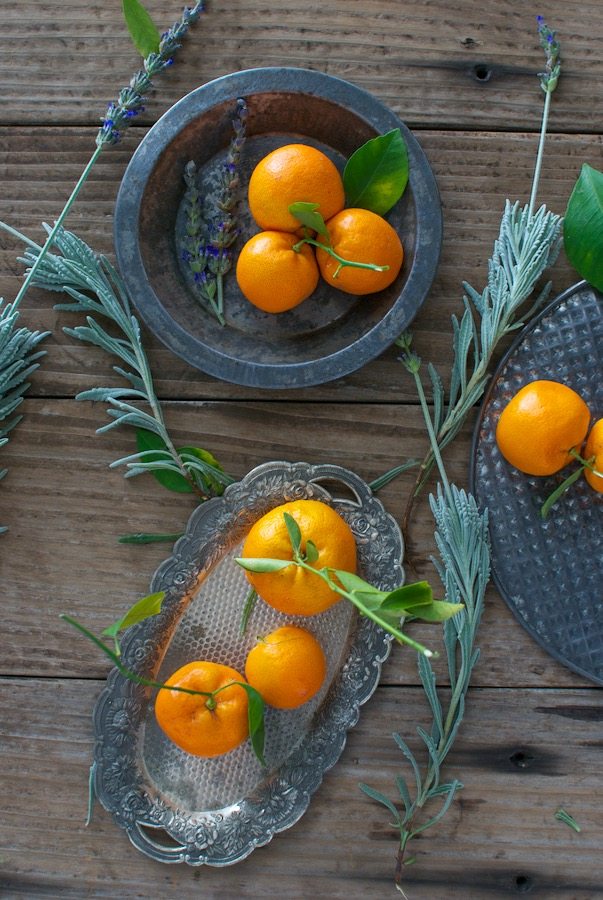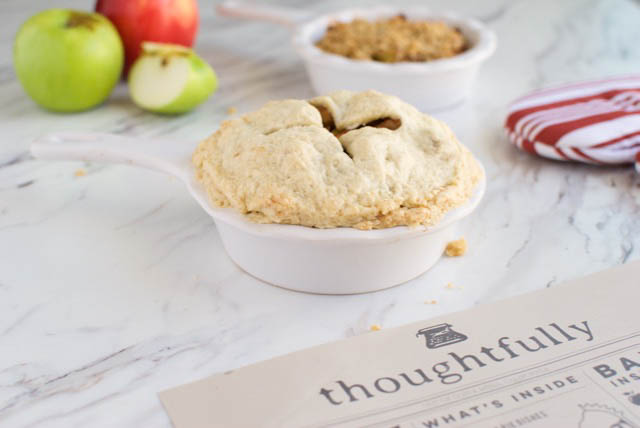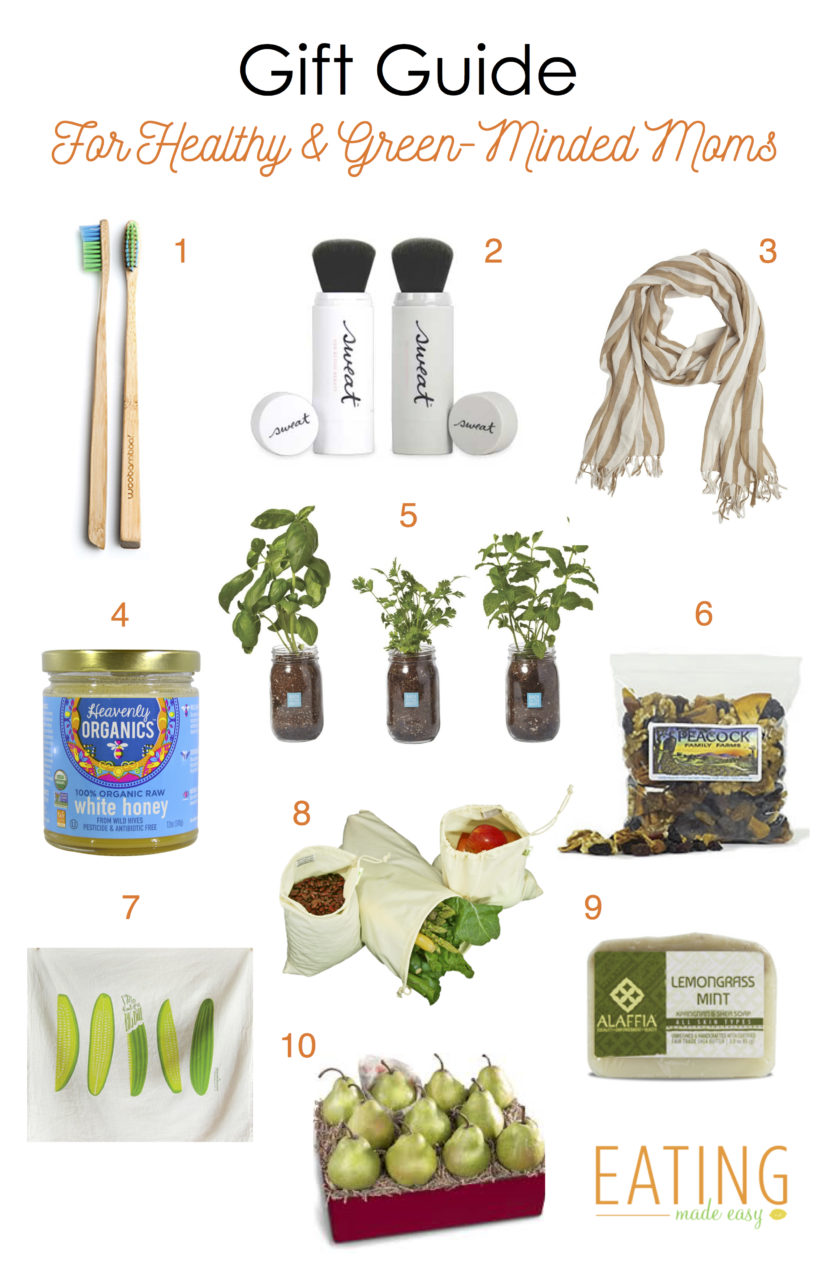‘Tis the season to buy a fridge full of groceries, only to toss half of them a week later after having lived on cookies & eggnog at unexpected parties and gatherings. Right?
Not this year!
Since it’s all too easy to waste food (and thus hard-earned money) when our eating routines are all over the place, I asked some of my favorite home cooks how they stay efficient during the busy holiday season. Below are their tips for saving time, money and waste, both now and year-round.
16 Ways to Save Money and Reduce Food Waste During the Holidays
Use leftovers as your guide. “Think about what you usually have leftover and spend some time searching for recipes you can use to transform them into new dishes. If you always have leftover mashed potatoes, look for a recipe for mashed potato cakes. Use your turkey carcass to make turkey dumpling soup or whip up a batch of homemade chocolate cups filled with peanut butter and leftover cranberry sauce!” – Lindsay Livingston, RD of The Lean Green Bean
Keep a freezer “scrap bag.” “I keep a large zip-top bag in my freezer that I place veggie scraps into. Ends of carrots, mushroom stems I didn’t use, etc. Once the bag is filled up I roast a whole chicken and use the carcass and the veggie scraps from the freezer to make a big batch of broth. It allows me to use the whole chicken as well as get a use out of veggie scraps that would have otherwise been thrown away.” – Willow of C&J Nutrition
‘Process’ your produce when you get home from the store. “I divide things into smaller containers that are easy to grab and go, then rinse and chop produce that needs it so it’s easier to eat later. Convenience is king! Here’s how we meal prep.” – Natalie and Amy of Super Healthy Kids
Meal plan around your family’s favorite meals. “Having a plan helps focus grocery shopping and ensures the food you bring home is put to good use. If you’re new to meal planning start simply: before looking up recipes online or in a cookbook, make a list of your family’s top five to eight meal types (tacos, bowls, stir-fry, soup, salad, etc). Once you have a list of the types of meals you prefer you’ll have a framework for your plan which will make finding specific recipes easier. Find more meal planning tips and how to streamline the process here.” – Robyn of Real Food Whole Life
Plan a “wiggle night.” “As a mom, meal planning is crucial to my weekly success. During the holiday season things are a bit more hectic so I always plan a ‘wiggle night’ meal. It’s a meal that I can make as usual or something that can be put away and saved for the next week in case something comes up (an invitation to go see Christmas lights or a special event at school, for example). ‘Wiggle night’ meals can be as simple as tomato soup with grilled cheese or freezer pinto bean and cheese burritos or a veggie and sausage stir fry using frozen veggies. These are easy meals that can last a few extra days until you get around to eating them, without any waste.” – Brittany Dixon of A Healthy Slice of Life
Take inventory. “Before making a grocery list I thoroughly survey my pantry, fridge and freezer. I really dig in, unearthing buried bags of frozen peas and year-old cans of coconut milk. Not only does this prevent me from buying things I already have that I may have forgotten about, it begins my meal idea inspiration. If I find a bag of dry lentils, a can of tomatoes, half an onion and a few carrots – I discover I can make my family’s favorite soup without even having to buy anything. This helps us stick to our food budget and satisfies my need to feel efficient.” – Amelia of Eating Made Easy (aka me!)
Plan only 2-3 days in advance. “I swear by themed meal planning, and not planning too far in advance. I find if a plan for a whole week we end up wasting food due to an unexpected event that comes up (sick children, Dad home late from a work meeting, play date runs late and we stay for pizza, etc.). By leaving a few days in my meal plan open and always having a stocked pantry, I can fill in those days if I can’t get to the store with canned or frozen food items. Keeping a running list of no-recipe, simple meal ideas also helps to inspire me when those days and nights with “no plan” come up. And because we are feeding two small toddlers and their appetites are small, I have learned to repurpose leftovers into new meals we can enjoy later in the week too.” – Katie of Mom to Mom Nutrition
Eat the decorations. “Squashes, pomegranates, citrus fruits and dried herb stems all make beautiful holiday decor, and you can turn them into soups, sauces or salad dressing later. Using edibles saves money on decorations and instead of having to store them after, you can eat them! More tips on Zero Waste Holidays here. – Sara Tetreault of Go Gingham
Make soup (and stuffing waffles). Extra roasted vegetables can easily be thrown into a simple base soup, like butternut squash. Store bought soup totally works for this! Leftover stuffing can actually be put it in your waffle maker for a crispy, stuffing treat. Try mixing 1 egg with about 2 cups of crumbled stuffing and waffle away! Gravy on top for bonus points. – Ashley of Edible Perspective
Think about leftovers when meal planning. Planning ahead for me doesn’t just mean making a list of my shopping items but also making a list of what I can do with the leftovers afterward, so that nothing goes bad. So, if I am planning to cook a turkey, I’ll also buy whole grain bread for sandwiches for my family the next day. Or if I’m making a quinoa dish, I’ll buy a head of romaine to make a salad with leftovers. If you know you won’t eat extra cooked grains the week they’re made, you can store them in your in freezer to use within a month. – Amie of The Healthy Apple
Get creative. “When my husband Alex and I have lots of leftovers from entertaining, we love to come up with creative ways to use them as meals. Instead of trashing leftovers you’re not sure what to do with, try a Chopped-style challenge to decide how to incorporate them into your meals. You might be surprised with what you come up with! And things you just can’t decide what to use for? Make broth! We love using any leftover veggies to make veggie broth. It’s delicious and an interesting way to use up odds and ends.” – Sonja Overhiser of A Couple Cooks
Freeze leftovers. “We freeze leftovers so we can pull out meals when food isn’t in so much abundance. We also share recipes with friends and neighbors. I feel better when I know our food goes to a good home.” – Maria of Two Peas and their Pod
Stock up at the bulk bins. “Over the holiday season, I buy as much food as possible from the bulk food bins. Buying in bulk allows me to purchase exactly what I need and in turn cuts down on food waste. The key is to really stick to only what you need. For example, most of these Healthier Peanut Butter Dessert Recipes require a small amount various dry goods such as oats, flax seeds and chocolate chips. Rather than buying large containers of each ingredient, I can get the exact amounts I need for each recipe.” – Lori Alper of Groovy Green Livin‘
Shop at the farmers market. “When you buy food at the farmers market, you can pick the exact amounts you need cutting down on waste. The food tends to be more fresh and taste better too. If you still have extra fruits and vegetables, freeze them and use in your Smoothie Project! – Catherine of Weelicious
Buy less than you think you need. “I think it’s human nature to gather and store stuff, and most of us to this (big time) in our fridge, freezer and pantry. I’ve been intentionally buying less, just to see what it feels like. And I’ve found it feels great. We still have plenty to work with, and I don’t have to feel as much of the guilt associated with overconsumption.” – Amelia from Eating Made Easy (me again!)






5 Comments
Maria
November 28, 2016 at 6:15 pmSo many great tips! Thanks for including me!
Amelia Winslow
November 29, 2016 at 12:02 pmI learned a lot from these too! Thanks, Maria!
Kendra
December 12, 2016 at 4:33 amThese are great! I’m always looking for new ways to save on food waste:)
Julia Kruz
July 13, 2017 at 10:35 amAll the described 16 tips are super, some I use myself for example tips: “Plan only 2-3 days in advance” and “Having a plan helps focus grocery shopping and ensures the food you bring home is put to good use.” Thanks a lot for amazing review!
Bella Hardy
May 7, 2018 at 2:11 amI follow these golden rules: “Shop at the farmers market” and “Buy less than you think you need. I found your post from Pinterest! I’m also gonna pin this post on my Pinterest board my followers will like it. Thanks for sharing Amelia!